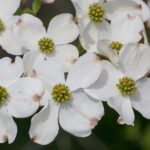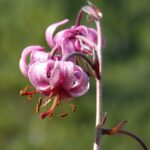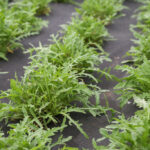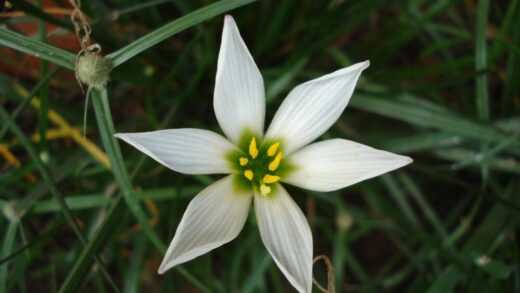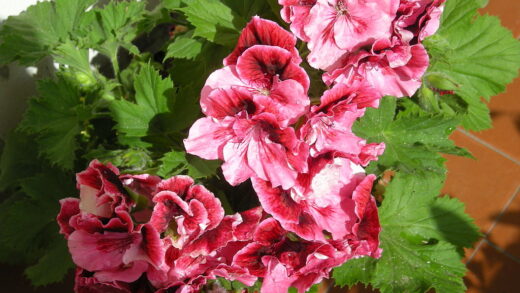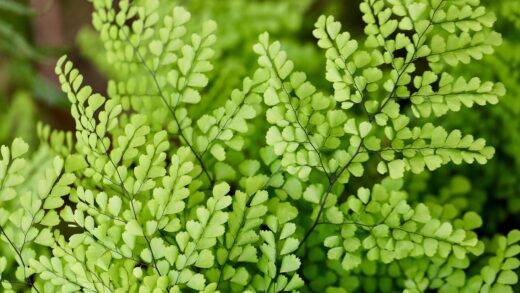Diseases and pests of the amethyst hyacinth

Brimeura amethystina is a remarkably resilient plant, generally untroubled by the wide array of diseases and pests that can plague other garden inhabitants. Its robust nature and specific cultural requirements often mean that common garden ailments pass it by. However, no plant is entirely immune, and under certain conditions, particularly when its fundamental needs for excellent drainage are not met, problems can arise. The most significant threat is not from an insect or a leaf spot, but from diseases originating in the soil, primarily bulb rot caused by excessive moisture. Understanding these potential issues and focusing on preventative care is the most effective strategy for keeping these delicate beauties healthy and flourishing.
Fungal diseases and bulb rot
The most prevalent and serious threat to the health of Brimeura amethystina is bulb rot. This is not a single disease but rather a general term for a condition caused by various soil-borne fungi, such as Fusarium or Pythium, that thrive in waterlogged, poorly aerated conditions. When the soil around the bulb remains saturated for extended periods, these pathogens are able to attack and decompose the bulb’s tissues. The risk is highest during the plant’s summer dormancy period when the bulb is inactive and particularly vulnerable to sitting in wet soil, but it can also occur during a wet winter.
The symptoms of bulb rot are often not apparent until it is too late. A bulb affected by rot may simply fail to emerge in the spring. In other cases, the plant might produce weak, yellowed, and stunted growth that quickly withers and dies. If you suspect bulb rot, you can carefully excavate the bulb from the soil. A healthy bulb will be firm and solid, whereas a rotted bulb will be soft, mushy, and discoloured, often with a sour or unpleasant odour. Unfortunately, once a bulb has rotted, it cannot be saved and should be removed and destroyed to prevent the pathogens from spreading further in the soil.
Prevention is the only effective strategy against bulb rot. The cornerstone of this prevention is providing impeccable drainage. This starts with selecting an appropriate planting site and meticulously preparing the soil by incorporating generous amounts of grit and organic matter to improve its porosity. For container cultivation, using a gritty, free-draining compost mix and ensuring pots have ample drainage holes is essential. Strict adherence to the plant’s watering needs, especially allowing the soil to dry out completely during the summer dormancy, is paramount in creating an environment that is inhospitable to these fungal pathogens.
In areas where bulb rot has been a problem previously, it may be worth considering soil solarization for new beds, a process that uses the sun’s heat to kill soil-borne pathogens before planting. However, for most gardeners, simply improving the soil structure and being mindful of watering practices is sufficient. Avoid using excessive amounts of high-nitrogen fertilizer, as this can produce soft, succulent growth that is more susceptible to fungal attack. By focusing on creating the right growing conditions from the outset, the risk of bulb rot can be almost entirely eliminated.
More articles on this topic
Common garden pests
Brimeura amethystina is fortunate to be resistant to most common garden pests. Its foliage does not seem to be particularly palatable to many of the usual suspects like aphids or caterpillars. However, there are a few generalist pests that may occasionally cause minor issues, particularly slugs and snails. These molluscs are most active in damp conditions and can be attracted to the tender new shoots as they emerge in the spring. They use their rasping mouthparts to chew holes in the leaves, which can be unsightly and, in severe infestations on very young plants, could potentially weaken them.
Managing slugs and snails can be done through various methods. Encouraging natural predators such as birds, frogs, and hedgehogs into your garden is a great long-term, eco-friendly solution. Physical barriers, such as a ring of crushed eggshells, horticultural grit, or copper tape around the planting area or pots, can be effective deterrents. In the evening, you can also physically remove them by hand. If the problem is severe, organic slug pellets based on ferric phosphate can be used, as they are safer for wildlife and pets than traditional metaldehyde-based pellets.
Another group of potential pests are soil-dwelling insects, such as the larvae of the vine weevil, especially for plants grown in containers. The adult weevils cause minor notching on the leaf margins, but the real damage is done by the C-shaped, creamy-white grubs that live in the compost and feed on the roots and the bulb itself. A severe infestation can completely destroy the root system, causing the plant to wilt and die suddenly. Checking the compost for these grubs when repotting is a good preventative measure.
Biological controls are highly effective against vine weevil larvae. Pathogenic nematodes, microscopic creatures that attack and kill the grubs, can be watered into the compost in the autumn or spring when the soil temperature is suitable. This is a targeted and environmentally safe method of control. For adult weevils, inspecting plants at night, when the nocturnal adults are active, and shaking them onto a sheet of paper allows for their collection and disposal. However, it is important to reiterate that significant pest infestations on Brimeura amethystina are rare.
More articles on this topic
Viral and bacterial issues
Viral and bacterial diseases are exceedingly uncommon in Brimeura amethystina and are generally not a concern for the average home gardener. Plant viruses typically manifest as distorted growth, unusual streaking or mottling on the leaves and flowers, and a general decline in the plant’s vigour. These diseases are often spread by sap-sucking insects like aphids, which is another reason why this plant’s natural resistance to such pests is so beneficial. There is no cure for plant viruses, so if a plant is suspected of being infected, it should be dug up and destroyed to prevent it from acting as a reservoir for the disease.
The best way to avoid viral diseases is through good sanitation and by purchasing bulbs from reputable sources. High-quality suppliers will have their stock inspected and certified to be free from common pathogens. When working in the garden, keeping your tools, such as pruning shears or trowels, clean can help prevent the mechanical transmission of diseases from one plant to another, although this is more of a concern with plants that require regular pruning. As Brimeura amethystina requires minimal hands-on intervention, this risk is naturally very low.
Bacterial diseases are also not a known problem for this species. These diseases often cause symptoms like soft rots, leaf spots with a water-soaked appearance, or wilting. Like fungal diseases, they tend to be more prevalent in overly wet and humid conditions with poor air circulation. The cultural practices that prevent fungal bulb rot—namely, excellent drainage and appropriate watering—also create an environment that is not conducive to the development of bacterial infections.
Ultimately, the inherent toughness of Brimeura amethystina means that gardeners are very unlikely to encounter these more obscure health problems. By focusing on the plant’s primary cultural needs, you are creating a growing environment where it can thrive and its natural defense mechanisms can function optimally. Healthy, unstressed plants are always better equipped to resist any potential pathogens they may encounter, making preventative care the most powerful tool in the gardener’s arsenal against disease.
Environmental stress factors
Beyond pests and diseases, Brimeura amethystina can also be affected by environmental stress if its growing conditions are not met. One of the most common stressors is improper light exposure. While the plant is tolerant of a range of conditions from full sun to partial shade, extremes can cause problems. In deep, heavy shade, the plant may struggle to gather enough energy to flower well, resulting in sparse blooms and weak, floppy foliage. It may survive, but it will not thrive, and its display will be disappointing.
Conversely, in very hot climates, planting in scorching, all-day sun can also lead to stress. The intense heat and light can scorch the delicate leaves, causing them to develop brown or bleached patches. It can also cause the soil to dry out excessively fast during the crucial spring growth period, leading to water stress even if you are watering regularly. In such regions, a location that provides bright morning sun and some protection during the hottest part of the afternoon is the ideal compromise, offering sufficient light for photosynthesis without the damaging effects of extreme heat.
Soil-related stress, primarily from poor drainage, has already been discussed in the context of bulb rot, but it is worth re-emphasizing as the number one environmental stressor. However, soil that is too poor or compacted can also cause issues. In soil that is completely devoid of nutrients, the plants may be stunted and fail to multiply. Compacted soil can physically restrict root growth and impede the emergence of new shoots in the spring. This highlights the importance of thorough soil preparation before planting, not just for drainage but for creating a healthy, friable medium for root exploration.
Finally, competition from other plants can be a significant stressor. Due to its small size, Brimeura amethystina can be easily outcompeted for light, water, and nutrients by larger, more aggressive neighbours. Planting it next to vigorous, spreading perennials can result in the amethyst hyacinth being smothered and eventually disappearing from the garden. When choosing companion plants, select species that are of a similar scale or have a non-invasive growth habit. Allowing adequate space between plants ensures that each has access to the resources it needs to flourish without undue competition.
Preventative care strategies
The most effective approach to managing diseases and pests for Brimeura amethystina is a proactive one, focused on prevention rather than cure. The foundation of this strategy is to mimic the plant’s native growing conditions as closely as possible. This begins with the initial act of planting. Choosing a site with full sun to partial shade and, most importantly, soil with excellent drainage is the first and most critical step in preventing the most common problem: bulb rot. Amending heavy soils with grit and organic matter is not optional; it is essential.
A second key preventative measure is to practice proper watering hygiene. This means watering the plant according to its needs, providing consistent moisture during spring growth and then enforcing a strict dry period during its summer dormancy. Watering at the base of the plant minimizes moisture on the leaves, which can help prevent the establishment of any potential foliar fungal spots, however rare they may be. For container plants, this means physically moving them out of the rain during summer to guarantee the required dry rest.
Good garden sanitation also plays a role in preventing problems. Regularly remove weeds from around your plants to reduce competition and eliminate potential hiding spots for pests like slugs and snails. When the plant’s foliage has completely died back at the end of its season, clear it away. This removes any material that could potentially harbour fungal spores or pest eggs over the winter. Maintaining good air circulation around the plants by not overcrowding them also helps to create a healthier growing environment where foliage can dry quickly.
Finally, starting with healthy, high-quality bulbs is a crucial preventative step. Purchase your bulbs from a trusted, reputable nursery or supplier. These bulbs are more likely to be vigorous and free from disease from the outset, giving them the best possible start in your garden. Inspect the bulbs before planting, and discard any that feel soft, show signs of mould, or are damaged. By combining these preventative strategies, you can create a garden environment where Brimeura amethystina will not just survive, but thrive, remaining healthy and trouble-free for many years.
📷: Krzysztof Ziarnek, Kenraiz, CC BY-SA 4.0, via Wikimedia Commons









